If you’re just getting started recording your music or performing live, you may not want to spend a ton of money on a microphone. And if you’re serious about recording music, you need a well-rounded studio with a well-stocked microphone locker.
The most common type of microphone in studios is the condenser microphone. But the prices for many of the most popular studio microphones discourage many musicians and sound engineers. For most of us, buying all the “industry standards” would put us right into the poor house.
If this is you, don’t get discouraged. There are plenty of great condenser microphones you can buy for less than or around a hundred dollars. To help you sort your way through all of the options, we’ve put together this buying guide of some of the best affordable microphones.
Post Contents
The Two Types Of Condenser Microphones
Generally, condenser microphones come in two sizes. You can either purchase a large diaphragm microphone or a small diaphragm microphone. These two types of microphones both have different strengths and weaknesses. You can use them for different purposes or have them complement each other to compensate for the other’s weaknesses.
Large Diaphragm Condenser Microphones
Large diaphragm condenser microphones have a diaphragm that is one inch or more in diameter. Typically, when people think of condenser microphones they think of large diaphragm. A large diaphragm condenser normally gives you a warmer sound that accentuates the lower notes nicely. They have a less consistent frequency response, which on a good microphone adds color to the sound source. They also have less self-noise. Large diaphragms are typically used for vocals.
Small Diaphragm Condenser Microphones
Small diaphragm condenser microphones have a diaphragm that’s less than one inch, often closer to ½ inch. Small diaphragm, or pencil, microphones are usually cylindrical and fit into a mic stand in the same way most dynamic vocal microphones do. Small diaphragm condensers normally have a more consistent frequency response. Also, due to the size of the diaphragm, they normally have a better transient response and an extended high-end frequency.
Small diaphragm mics are more honest than large diaphragms – so if you have a good sound source, they work wonderfully. Typically, small diaphragms make the best cheap condenser mics for instruments and drum overheads.
What to Look For When Buying an Affordable Condenser Microphone
When shopping for a microphone, it helps to know what to look for. Here’s an overview of the big things to look at when evaluating a microphone.
Frequency Response
When you’re trying to find a quality microphone that will meet your needs, it’s important to understand the concept of frequency response. Frequency is the scientific way to describe and analyze the pitch of a note. Sound is made from variation in pressure through air or some other medium. Normally, we describe this as a sound wave. The more waves there are, the higher the pitch of the note. We normally measure frequency in Hertz (Hz). Basically, Hertz represents how many sound waves pass by in one second. So if the note A is 440 Hz, that means it produces 440 sound waves a second.
Human ears are capable of hearing anything between 20Hz and 20,000 Hz. High end microphones will work very hard to have all of the frequencies represented accurately. If they are specialized, they may focus on one area of the frequency spectrum or they may boost small areas so the microphone can offer a unique tone.
Oftentimes, the more affordable microphones will have more erratic frequency response. This isn’t always bad. It just means that they may not be as universal. Before buying a microphone, try to find a frequency chart that shows how it responds to different frequencies. This will help you decide if it is the best budget condenser microphone for your needs.
Consistency
When buying a microphone at a lower price point, the biggest concern is the brand’s consistency. In order to keep the price attractive, budget microphone brands typically make their products overseas where there is less quality control. If you are looking to build your microphone locker at an affordable price, do your research and make sure that the companies you are buying from make a product that performs consistently well (the mics on this list are a good start).
You want to look at more than the tonal response when you get to this point. How well is the microphone built? Will it be banged up when you get it or is going to fall apart within a month? If you are ordering your microphone, is it being shipped well? Shipping can be an easy way for a company to keep their costs down so they can create affordable products. However, microphones are sensitive and can be easily damaged. If you are ordering your microphone online, see if you can’t buy it from a company that has a reputation for strong customer service (like Amazon).
What Additional Equipment You’ll Need
You won’t need much, but condensers do require a few extra pieces of equipment to get them up and running. Condenser microphones need an electrical supply to produce a usable signal. We call this phantom power. Most mixers and audio interfaces have the option for phantom power built-in.
For most large diaphragm condensers, and some of the small diaphragm condensers, you’ll need to have a shock mount to hold them to the stand. Many of these microphones come with one included, but I would recommend purchasing an aftermarket universal shock mount, which are usually higher-quality than the shock mounts that come prepackaged with most microphones.
Our Reviews of the Top Cheap Condenser Microphones
Audio-Technica AT2020 Cardioid Condenser Studio Microphone
Versatile and affordable large diaphragm cardioid condenser mic that sounds great
Audio Technica has become the go-to brand for affordable condenser microphones. If we were judging by popularity, the Audio Technica AT2020 would be considered the best cheap condenser mic. The AT2020 is one of the most popular choices for home studios because of its unbeatable quality, consistency, and price.
This mic does a great job when compared to some of Audio Technica’s more expensive studio options. And it comes with a carrying pouch and a microphone clip – but it would be nice to have an actual shock mount. We highly recommend adding one.
The AT2020 is a large diaphragm condenser mic with a cardioid pattern, and fairly low self-noise (20 dB). It also has a strong frequency response that ranges from 20 Hz to 20 kHz, although it does have a slight dip around 200 Hz. However, when compared to the other large diaphragm condenser microphones on this list, it has the most consistent frequency response.
Audio Technica AT2020 microphones are well-built and can be used in live music situations without too much worry. If you’re looking for a versatile microphone at a very good price point, this is certainly an option worth considering.
Behringer B-1 Large Diaphragm Condenser Microphone
Professional cardioid large-diaphragm condenser mic with excellent audio quality
The Behringer B-1 is a large diaphragm condenser microphone that comes with a full package of basic accessories – including an aluminum case, a windscreen, and a shockmount. The microphone is a traditional shape and we’ve seen people use the aluminum case to hold other microphones that may be more sensitive or valuable.
Apart from the package, the Behringer B-1 is a great mic that stands on its own merits. It has an impressively even frequency response with a bump in the high frequencies. This could be too bright for some sound sources, but for others it can create a nice separation and a little bit of sparkle. The self-noise on this microphone is only 13 dB, which is pretty impressive considering the price. In fact, it’s the lowest rating of any microphone on this list.
Like most large diaphragm condensers, the Behringer B1 has a cardioid condenser pattern. The microphone is pretty straightforward without many bells and whistles. It does feature both a -10 dB pad and a low cut filter. The only problem is that only one can be used at a time. This is a little nitpicky, and it’s a very rare that you would ever need to activate both at the same time. Even if you did, both of these features are available in most DAW’s or mixers.
With the quality of the microphone and the awesome package it comes with, the Behringer B-1 is easily one of the best affordable mics out there.
DBX RTA Omnidirectional Small Diaphragm Condenser Microphone
Omnidirectional small-diaphragm reference mic with flat response and natural sound
The DBX RTA wouldn’t be most people’s first thought for a good, general purpose microphone. It’s designed to be a small diaphragm reference microphone for the DBX driverack system. But reference microphones are used to tune and set up sound systems. In order to do this, they need to have an incredibly flat frequency response. This is a wonderful feature if you’re already getting the tone you want from your instruments – because this little mic will perfectly capture the sound you’re producing.
The DBX RTA has an omni-directional pattern so it picks up a broader tonal spectrum than many other cardioid pattern condenser microphones. This microphone does have a lot of self-noise (28 dB), which limits it a little bit. To get the best sound, we recommend placing this microphone close to the sound source so that you’re able to turn the gain down on your preamp. If you can do this, you’ll have an incredibly accurate microphone with very good tone for not much money.
Reference microphones can be great options when recording piano or classical music because they have the most transparent, natural sound of any microphone. It may be an unconventional choice but it’s a good idea to have some kind of reference microphone in your mic locker. You’d be surprised by how often you’ll reach for this mic.
AKG Perception 170 Professional Instrumental Microphone
Small diaphragm condenser mic that excels on stringed instruments and drum overheads
The AKG Perception 170 (P170) is a small diaphragm condenser microphone that excels on stringed instruments and drum overheads. Its metal casing gives it a solid, durable feel, and it definitely holds up to heavy use. This mic isn’t sold as a stereo pair, but with AKG’s reputation for consistency you can easily buy two and still have a close stereo pattern.
The P170’s frequency ranges from 20 Hz to 20 kHz, but it has a pretty drastic bump around 10 kHz. Generally, most sound sources won’t reach this high, so it shouldn’t be a huge issue beyond a little sibilance (“s” type sounds creating a harsh tone) or string noise. On the flip side, this mic can create a nice, bright sound with good separation if used on the right instrument.
The self-noise is only 19 Db So you won’t need to worry about keeping the microphone close to the soundsource like you do on the DBX RTA. This can work out to be an advantage and gives you more freedom when you are trying to find the best microphone placement for your sound source. It also makes the AKG P170 microphone a very strong choice for live music.
Neewer NW 800 Professional Studio Broadcasting and Recording Microphone
Value cardioid condenser for starting a recording or podcasting journey on a budget
A lot of sound engineers have been talking about the Neewer NW 800. A quick scan of Youtube videos will show different people trying this microphone out and being generally impressed. Somehow, this company has managed to produce a good microphone and sell it for less than thirty dollars.
This mic seems durable, with an all metal body and a tightly-knit grill. It features a cardioid pattern. The frequency response isn’t bad at 20 Hz to 16 kHz, but it does cut a little bit of the high range out. What surprised us the most was its low self-noise (an impressive 16 dB).
The NW 800 comes with some nice extras – like a sturdy shock mount, a windscreen, and an XLR to 1/8 inch cable, so you can plug the microphone into a computer adapter without needing to invest in an audio interface.
This microphone is a great option if you’re buying your first microphone or if you want to start doing podcasts or Youtube videos with a low upfront investment. The frequency response fits the spoken voice very nicely without any real loss in sound quality. The tight mesh and low self-noise also guarantees a clear, clean sound signal.
5 More Great Cheap Condenser Mics Worth a Look
- MXL 770 Cardioid Condenser Microphone. Affordable cardioid condenser mic great for everything from podcasting to recording.
- Samson C01 Cardioid Condenser Microphone. Rugged, multi-purpose large diaphragm cardioid condenser mic at an affordable price.
- MXL 990 Cardioid Condenser Microphone. Professional-quality large diaphragm cardioid condenser mic with tight sound reproduction.
- sE Electronics X1A Large Diaphragm Condenser Microphone. Well-balanced and robust condenser mic with impressively natural sound reproduction.
- MXL V67G Large Capsule Condenser Microphone. Slick-looking large diaphragm condenser for pure and warm vocal reproduction.
Conclusion
Even if you’re on the tightest of budgets, starting down the path of sound recording or putting together a well-stocked, versatile microphone locker isn’t out of reach. Whether you want an affordable condenser microphone to get started with podcasts and online videos or if you’re looking to have a microphone for anything that walks through your studio door, there are affordable options.
All of the items on this list are good mics to start with, and many of them can be found at your local music store if you want to take them for a test run. Even some of the most respected names in microphone technology are producing quality condenser microphones for less than or around a hundred dollars. Don’t let price scare you away from creating the best possible recordings you can. You can use this list to help you find the best cheap condenser microphone for your needs.


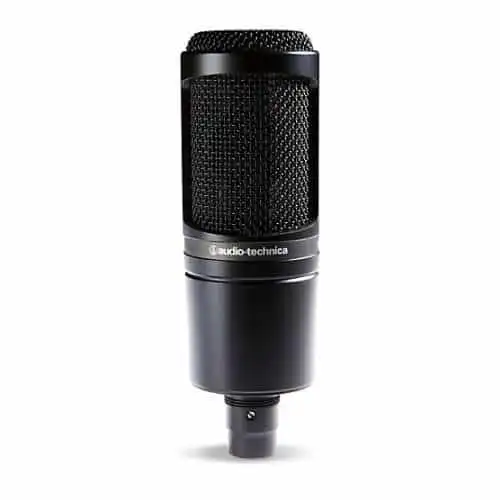

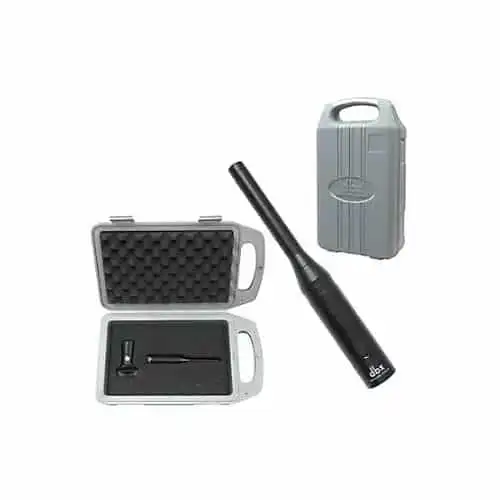

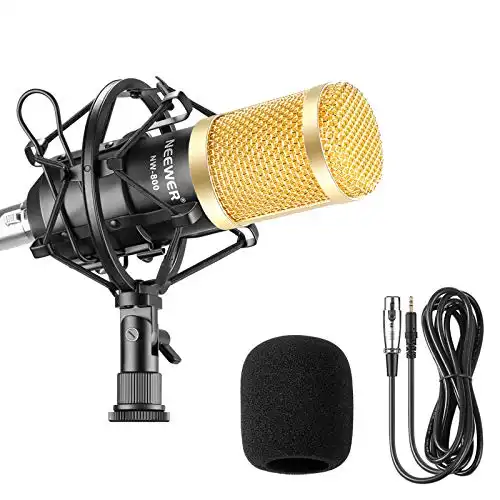

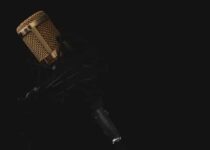



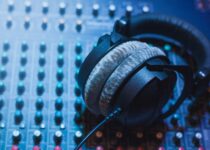
Nice list! I agree the AT2020 is one of the best out there in the budget category for large diaphragm condensers. In the small diaphragm category, I’d have to vote for the Oktava MK-012. They are great in stereo pairs, you just need to watch out for the fake Chinese knock-off sthat are being sold online.